Gout Joint Protection Calculator
Gout Joint Health Assessment
This tool helps you understand your risk of joint damage from gout based on key factors.
Important Notes:
- Target serum uric acid levels should be below 6 mg/dL for most patients
- Those with tophi should aim for below 5 mg/dL
- Regular monitoring and medication adherence are crucial for preventing joint damage
- Consult with your healthcare provider for personalized advice
Living with gout can feel like a constant battle between sharp pain and the fear of long‑term joint damage. The good news? You can take clear, practical steps to protect your joints and keep flare‑ups under control. Below are proven tips that combine medical treatment, smart lifestyle tweaks, and simple joint‑safety habits.
Key Takeaways
- Keep serum uric acid below 6mg/dL to halt crystal formation.
- Medications such as NSAIDs, colchicine, and urate‑lowering therapy (ULT) work best when paired with diet changes.
- Weight management, hydration, and low‑purine foods dramatically cut flare risk.
- Joint‑protection moves - like using supportive footwear and avoiding sudden twists - reduce mechanical stress.
- Regular monitoring with your clinician helps catch problems early.
What Is Gouty Arthritis?
Gouty arthritis is a form of inflammatory arthritis caused by the deposition of monosodium urate crystals in joints and surrounding tissues. These crystals form when uric acid levels in the blood rise above the solubility threshold, a condition called hyperuricemia. The immune system reacts, leading to sudden, excruciating pain, redness, and swelling-most often in the big toe but also in knees, ankles, wrists, and elbows.
Why Joint Damage Happens
Repeated crystal attacks erode cartilage, cause chronic synovitis, and may lead to tophi-hard deposits under the skin. Over time, the joint can lose its smooth surface, resulting in limited motion and permanent deformities. Preventing each flare is therefore essential to safeguard joint integrity.
Monitoring Serum Uric Acid
The cornerstone of prevention is keeping serum uric acid (SUA) in a safe range. Target levels are generally below 6mg/dL for most patients; those with tophi should aim for <5mg/dL.
- Schedule a blood test every 3months when starting or adjusting therapy.
- Use home uric acid meters for more frequent checks if recommended by your doctor.
- Record trends, not just single values, to see if lifestyle tweaks are working.
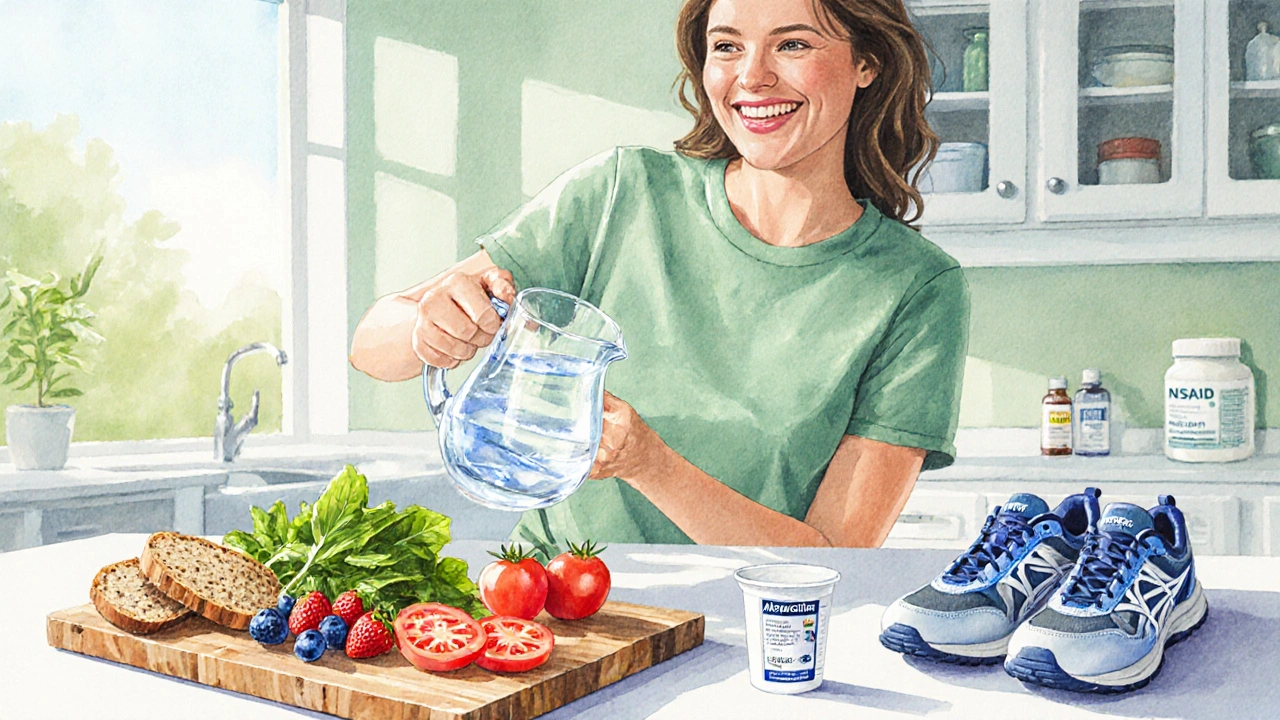
Medication Strategies
When it comes to drugs, three classes dominate gout management:
- Non‑steroidal anti‑inflammatory drugs (NSAIDs) - fast pain relief during flares.
- Colchicine - blocks crystal‑induced inflammation; useful for both acute attacks and prophylaxis.
- Urate‑lowering therapy (ULT) - long‑term solution; includes allopurinol, febuxostat, and newer agents like lesinurad.
Choosing the right regimen depends on flare frequency, kidney function, and any contraindications. Below is a quick comparison.
| Medication | Primary Use | Typical Dose | Key Side Effects |
|---|---|---|---|
| NSAIDs (e.g., ibuprofen) | Acute flare pain relief | 400‑800mg every 6‑8h | Stomach irritation, kidney strain |
| Colchicine | Acute flare & prophylaxis | 1.2mg then 0.6mg 1h later; 0.6mg daily for prevention | Diarrhea, muscle pain |
| Allopurinol | Long‑term uric‑acid lowering | 100‑300mg daily, titrated | Rash, hypersensitivity, liver enzymes rise |
| Febuxostat | ULT for patients intolerant to allopurinol | 40‑80mg daily | Cardiovascular warnings, liver changes |
Dietary Adjustments That Matter
Food is the biggest modifiable factor in gout. Cutting back on purine‑rich items and supporting uric‑acid excretion can dramatically lower flare risk.
- Avoid organ meats (liver, kidneys), anchovies, sardines, and shellfish.
- Limit high‑fructose sweeteners, sugary sodas, and excessive alcohol-especially beer.
- Embrace low‑purine foods: fresh fruits, vegetables, whole grains, and low‑fat dairy (which can lower SUA by up to 30%).
- Stay hydrated-aim for at least 2‑3L of water daily to help kidneys flush out uric acid.
- Consider a daily vitamin C supplement (500mg) if your doctor approves; it modestly reduces SUA.
Weight Management and Physical Activity
Carrying extra weight raises uric‑acid production and puts mechanical stress on joints. Losing 5‑10% of body weight can cut gout risk by nearly half.
- Combine moderate‑intensity cardio (brisk walking, cycling) with strength training 3‑4times a week.
- Focus on low‑impact options-swimming or water‑based aerobics protect joints while boosting fitness.
- Track progress with a simple journal or a phone app; celebrate milestones to stay motivated.
Joint‑Protection Techniques for Daily Life
Even with medication and diet in check, mechanical strain can still trigger damage. Simple tweaks can make a big difference.
- Wear supportive footwear with good arch support and cushioned soles; avoid high heels and flip‑flops.
- Use assistive devices (e.g., a cane or hand‑held grip) when climbing stairs or lifting heavy objects.
- Practice proper body mechanics: bend at the knees, not the waist, and keep loads close to the body.
- Apply joint‑splints or braces during high‑risk activities (like gardening) to limit excessive rotation.
- Warm up joints with gentle range‑of‑motion circles for 5‑10minutes before vigorous activity.
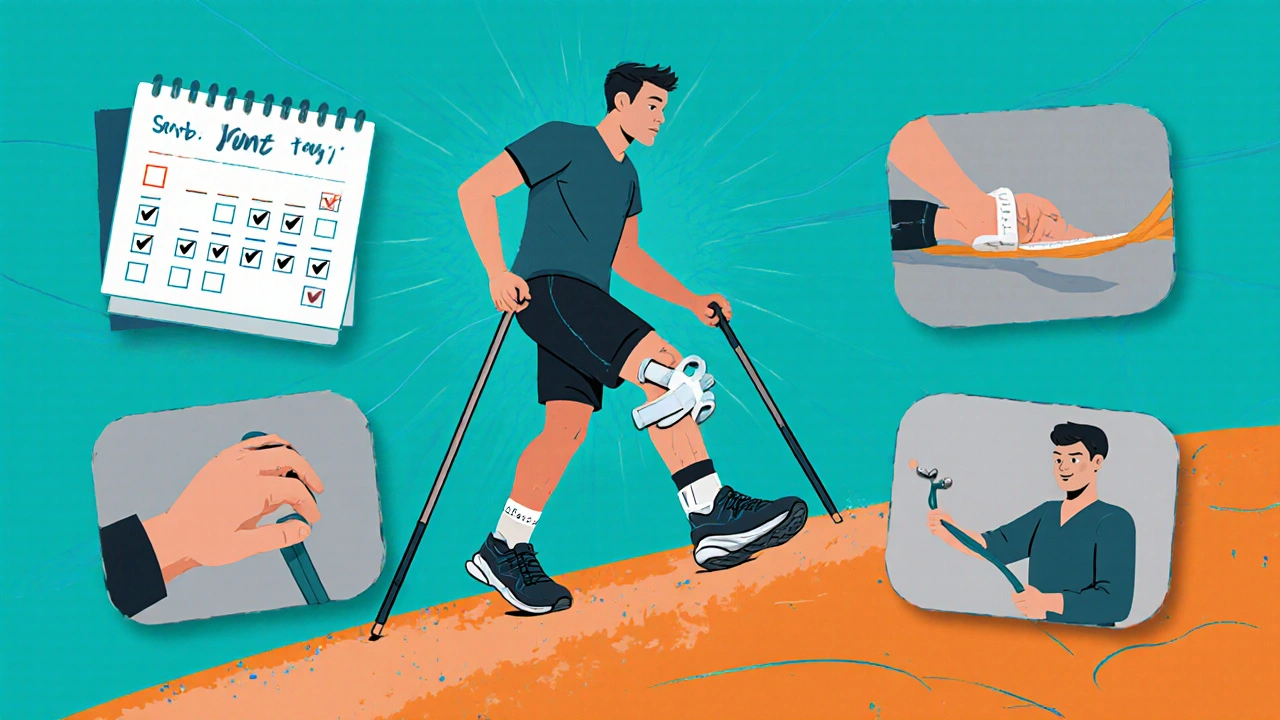
Physical Therapy and Rehabilitation
When flares have subsided, a tailored PT program can restore strength, improve flexibility, and teach safe movement patterns.
- Isometric strengthening of the quadriceps and calf muscles helps stabilize the knee and ankle.
- Low‑load resistance bands are ideal for hand and wrist conditioning without overloading joints.
- Balance exercises (e.g., single‑leg stands) reduce the chance of accidental twists that provoke crystal release.
Ask your rheumatologist for a referral; many insurance plans cover a limited number of sessions.
When to Seek Professional Help
Prompt medical attention can prevent irreversible joint damage.
- If pain lasts more than 48hours despite over‑the‑counter NSAIDs.
- Rapidly expanding swelling or fever-could indicate septic arthritis.
- Visible tophi forming under the skin.
- Kidney stones or unexplained renal function changes.
Early intervention often means an adjustment in medication dosage or a switch to a different ULT.
Putting It All Together: A Sample Weekly Plan
- Monday: Check SUA level (home meter), take allopurinol, low‑purine breakfast (oatmeal + berries), 30‑minute brisk walk.
- Tuesday: Attend physical therapy session focusing on ankle mobility, hydrate with 2L water.
- Wednesday: Cook dinner with grilled chicken, quinoa, and steamed broccoli; wear supportive shoes for work.
- Thursday: Take colchicine prophylaxis dose, 20minutes of gentle yoga for joint stretch.
- Friday: Review medication side effects, schedule blood test for next week.
- Saturday: Family hike (low‑impact trail), bring water bottle and snacks (low‑fat cheese).
- Sunday: Rest day, review weekly log, plan next week’s meals and activity.
This framework blends monitoring, medication, diet, movement, and joint‑care habits-exactly what you need for lasting gout joint protection.
Frequently Asked Questions
Can I stop medication if my uric acid stays low?
Stopping urate‑lowering therapy usually leads to a rebound in serum uric acid within weeks. Even if levels are controlled, most doctors recommend lifelong maintenance to avoid crystal re‑formation.
Is alcohol always bad for gout?
Beer and spirits are high in purines and can raise uric acid quickly. Wine in moderate amounts (1‑2 glasses per week) may be tolerated by some patients, but it’s best to discuss personal thresholds with your clinician.
How long does it take for allopurinol to lower uric acid?
Allopurinol typically begins lowering uric acid within 2‑3 weeks, but the full effect may take 4‑6 months of steady dosing. Regular blood tests are essential during this period.
Are there natural supplements that lower uric acid?
Vitamin C (500mg daily) and cherries (especially tart cherry juice) have modest uric‑acid‑lowering effects. They can complement, but not replace, prescribed medication.
What should I do if I get a sudden flare at night?
Elevate the affected limb, apply a cool compress, and take an NSAID or prescribed colchicine as soon as you can. If pain remains intense after 48hours, call your doctor for possible corticosteroid injection.

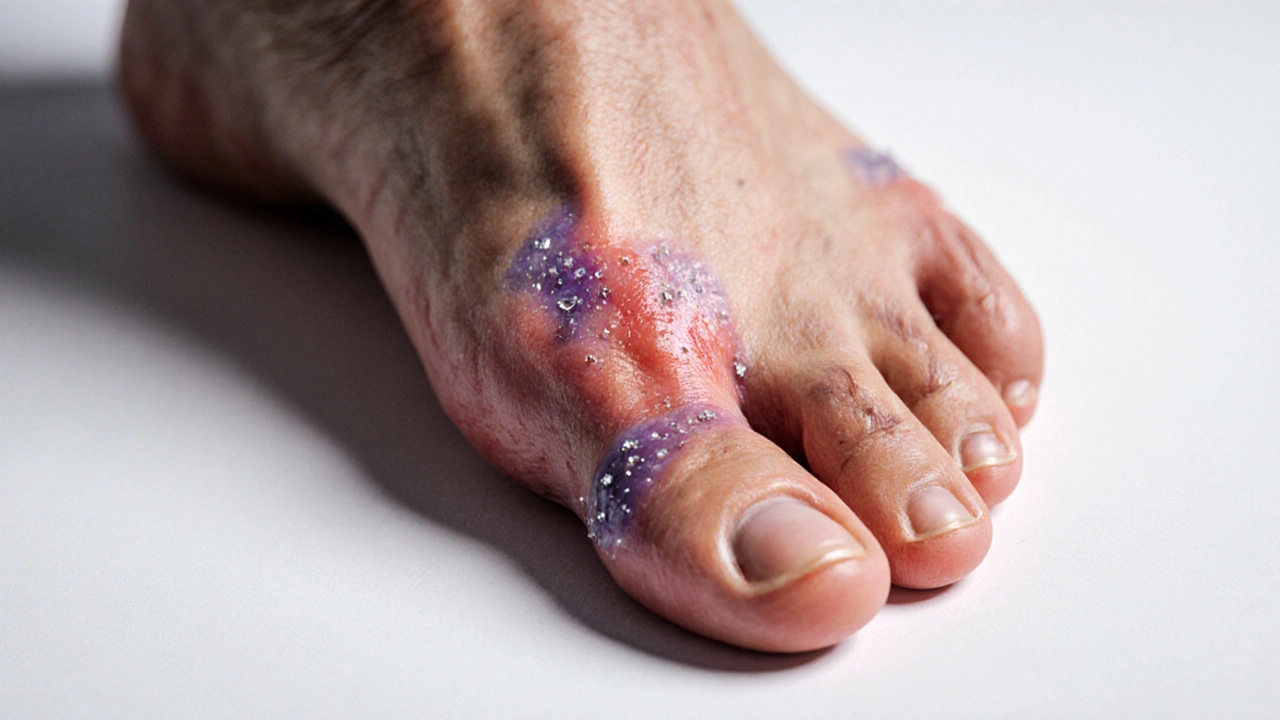

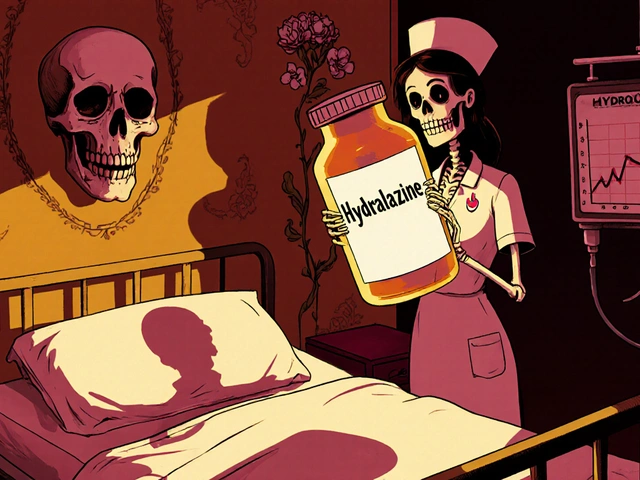
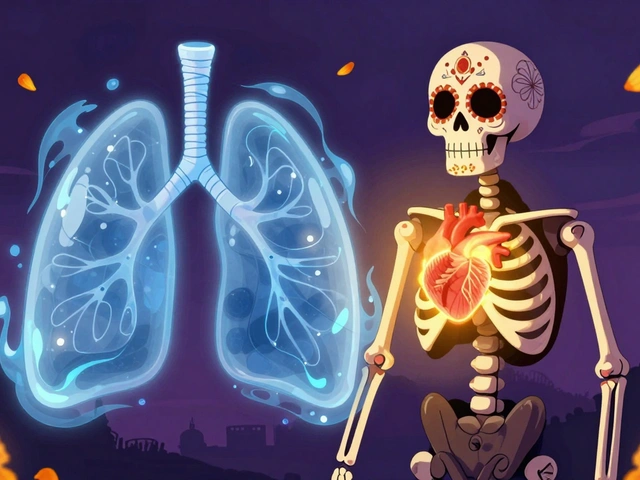
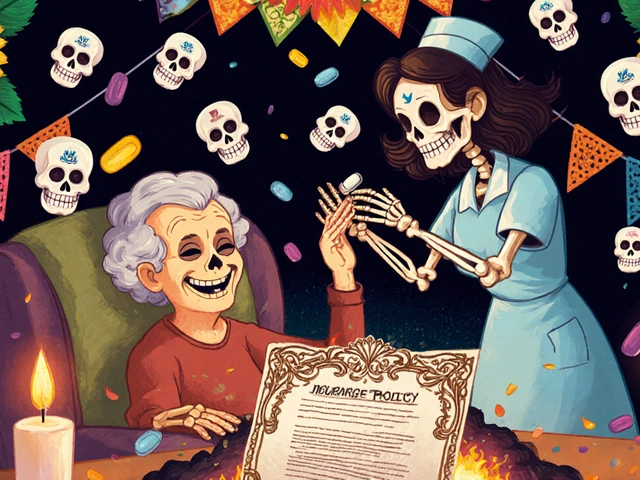

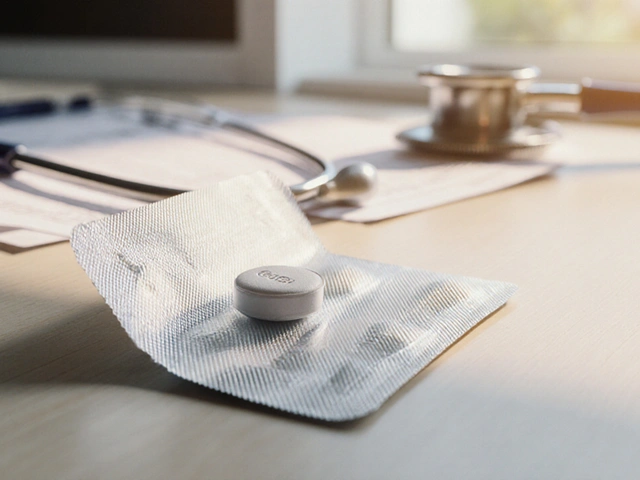
16 Comments
Rebecca Ebstein October 7, 2025
Wow, reading this gave me a boost of hope! Keeping uric acid low and staying active is totally doable, just remember to sip water like it's your favorite drink. Even if you slip up once, bounce back-your joints will thank you later. You got this, just keep goin'!
Artie Alex October 11, 2025
From a pathophysiological standpoint, the elucidation of monosodium urate crystal deposition cascades precipitates a cataclysmic inflammatory milieu, orchestrated by neutrophil extracellular traps and IL‑1β amplification. The therapeutic algorithmic paradigm necessitates a judicious integration of xanthine oxidase inhibition, uricosuric agents, and anti‑inflammatory prophylaxis, lest one succumb to irreversible arthropathic sequelae. This confluence of biochemical derangement and mechanical stress constitutes a veritable perfect storm, demanding relentless clinical vigilance.
abigail loterina October 14, 2025
Hey folks, just wanted to say that staying on top of your uric acid numbers and moving a little each day can really make a difference. Small steps like swapping soda for water or adding a short walk after meals are easy wins. Keep supporting each other, and remember that consistency beats intensity when it comes to protecting those joints.
Roger Cole October 17, 2025
Consistently monitoring uric acid is the key to preventing joint damage.
Krishna Garimella October 21, 2025
Think of your body as a delicate ecosystem where every molecule plays a role, and uric acid is just one of many actors on the stage. When we tip the balance, the crystals become the unruly guests that crash the party, causing pain and inflammation. Yet, like any disruption, it invites us to reflect on our daily habits-what we eat, how we move, and how we listen to our own signals. By choosing nutrient‑dense foods and staying hydrated, we restore harmony and give our joints the respect they deserve. In this dance of chemistry and lifestyle, consistency is the rhythm that guides us toward lasting health.
nalina Rajkumar October 24, 2025
Great tips 😃 keep drinking water 💧 and watch your diet 👍
Michael Barrett October 28, 2025
Well-if you’ll allow me to interject; the importance of uric acid monitoring, cannot be overstated-; regular testing, adherence to medication, lifestyle modifications; all converge-to guard against joint degeneration. Indeed, a comprehensive strategy-encompassing diet, pharmacotherapy, and exercise-offers unparalleled protection.
Inma Sims October 31, 2025
Ah, the ever‑so‑complex art of gout management-truly a field where simplicity is an illusion. While the guidelines politely suggest keeping uric acid below 6 mg/dL, one might as well be asked to climb Everest barefoot. Nevertheless, with a dash of dedication and a sprinkle of sarcasm, you can indeed tame those pesky crystals.
Gavin Potenza November 4, 2025
Honestly, the science behind uric acid is pretty straight‑forward: keep it low, stay active, avoid the junk. But let’s not forget the finer points-like picking the right footwear and regular check‑ups-because those little details can make a massive difference in the long run.
Daisy Aguirre November 7, 2025
Listen up, friends! Your joints are not a junk drawer for excess uric acid-treat them like royalty. Hydrate like a champ, munch on berries, ditch the red meat, and give those meds the respect they deserve. You have the power to slam the door on gout flare‑ups, so own it and stay fierce!
Natalie Kelly November 11, 2025
Just keep uric acid low and move a bit daily-easy win.
Tiffany Clarke November 14, 2025
Another post about gout, same old advice.
Sandy Gold November 18, 2025
It is rather astonishing how the lay public continues to underestimate the insidious nature of hyperuricemia, treating it as a mere inconvenience rather than the harbinger of catastrophic joint degeneration that it truly is. One must first acknowledge that monosodium urate crystals are not simply microscopic annoyances; they are, in fact, potent immunological agitators that precipitate a cascade of inflammatory mediators. The literature, replete with randomized controlled trials, unequivocally demonstrates that maintaining serum uric acid below the canonical threshold of six milligrams per deciliter yields a statistically significant reduction in tophaceous deposits. Yet, despite this robust evidentiary foundation, many persist in indulging in purine‑laden feasts, believing that occasional indulgence bears no consequence. Such a cavalier attitude betrays a fundamental misunderstanding of the chronicity inherent to gout pathology. Moreover, the therapeutic armamentarium extends far beyond the simple prescription of allopurinol; it encompasses a nuanced regimen of lifestyle modifications, including but not limited to optimal hydration, weight management, and the avoidance of fructose‑rich beverages. The synergistic interplay between pharmacotherapy and behavioral adjustments cannot be overstated, for neglecting either facet invariably undermines the other. Consider, for a moment, the paradox of a patient who scrupulously adheres to medication yet disregards dietary advice-this disconnect inevitably culminates in suboptimal outcomes. Conversely, a diligent individual who eschews prescribed agents in favor of natural remedies may find his or her efforts stymied by inadequate uric acid control. In the realm of joint protection, the importance of supportive footwear and the avoidance of sudden torsional stresses is often relegated to a footnote, when in reality these mechanical considerations are pivotal. Repetitive micro‑trauma can exacerbate crystal deposition, accelerating cartilage erosion and precipitating irreversible arthropathy. Thus, a holistic approach-one that integrates biochemical control, mechanical safeguarding, and psychosocial support-represents the gold standard for gout management. To summarize, the path to joint preservation is neither simplistic nor optional; it is a disciplined commitment to sustained vigilance, informed choice, and unwavering adherence. Failure to implement these measures inevitably results in progressive joint deformities and a diminished quality of life. In short, treat gout with the gravitas it deserves, or suffer the inevitable consequences.
Frank Pennetti November 21, 2025
Honestly, this whole gout spiel reads like a foreign health fad pushed by dietitians who don’t understand American eating habits. If you’re tired of being told to swap steak for tofu, just take the meds and stop overthinking it. The science is simple: lower uric acid, and you’re fine.
Adam Baxter November 25, 2025
Stay on top of your levels, keep moving, and crush those flares!
Keri Henderson November 28, 2025
You've got the tools-track your numbers, stay active, and protect those joints. Keep it up and you'll see the difference.